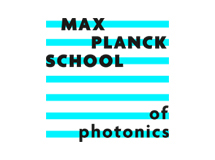
Mischa Bonn - Graphene Terahertz Photonics
Virtual Lecture
Lecture available on YouTube
Abstract:
Graphene is an attractive candidate for many optoelectronic applications because of its vanishing bandgap and high carrier mobility. Ultrashort terahertz (THz) pulses interact strongly with charge carriers in graphene. On the one hand, this strong interaction allows to probe the conductivity within one layer of graphene on ultrafast timescales. On the other hand, the strong interaction can be used for the efficient heating of charge carriers, when strong THz fields are applied. This process, in turn, can be used to generate higher harmonics of THz radiation, with unprecedented efficiency: 1% of the terahertz field can be converted into its third harmonic with a single pass through the 3.3 Å thin graphene monolayer. Higher (fifth, seventh, ninth, …) harmonics can also be readily generated.
[1] K. J. Tielrooij, et al. Photoexcitation cascade and multiple hot-carrier generation in graphene, Nature Phys. 2013, 9, 248.
[2] A. Tomadin, et al., The ultrafast dynamics and conductivity of photoexcited graphene at different Fermi energies, Science Advances 2018, 4 (5), eaar5313
[3] Z. Mics, et al., Thermodynamic picture of ultrafast charge transport in graphene, Nature Comm. 2015, 6, 7655.
[4] H.A. Hafez, et al., Extremely efficient terahertz high-harmonic generation in graphene by hot Dirac fermions, Nature 2018, 561, 507.
Biography:
Mischa Bonn is a research director at the Max-Planck Institute for Polymer Research (MPIP), Mainz, Germany. He works on label-free (ultrafast) vibrational spectroscopy and microscopy of biomolecular systems and water in such systems. He received his PhD in 1996 from the University of Eindhoven for research performed at the FOM-Institute for Atomic and Molecular Physics AMOLF in Amsterdam. After postdoctoral research at the Fritz Haber Institute in Berlin and Columbia University in New York, he worked at Leiden University from 1999 as an assistant professor, and from 2002 as associate professor. In 2004 he became a group leader at the FOM-Institute for Atomic and Molecular Physics AMOLF. In 2011 he joined the MPIP. His research interests are the structure and dynamics of molecules at interfaces, and electron transfer across interfaces. Mischa Bonn has won several prizes and awards and has published over 350 research articles.





